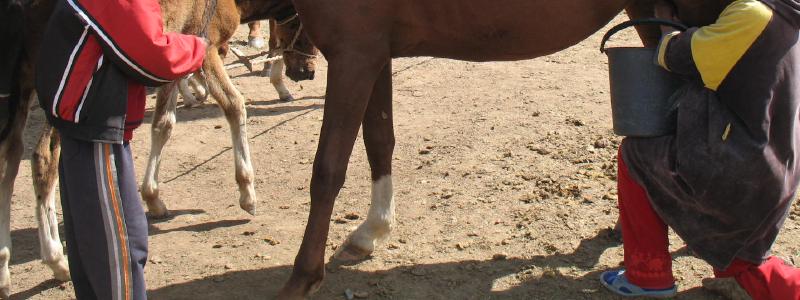More Than One Way to Digest a Sugar

Some time ago I mused on an article about Dairying in Mongolia and the mystery of the missing lactase.
In short, Central Asian peoples have been dairy farming for a long time, but are lactose intolerant. How does that work?
The problem with the question in the lede (and the prior article) is that it assumes that the only way to take advantage of the calories and nutrients in milk is to, well, drink milk.
Other diary products - such as cheese and yoghurt contain just the same nutrients as milk - and without the problematic lactose.
For millenia, humans have been using tools of all kinds to extend our reach - literally in the case of fishing hooks and spears; figuratively in the case of clothes to extend the range of environments in which we can survive and fire to extend the range of foods we can eat. Horses have extended our speed. Oxen have extended our strength.
By harnessing lactobacilli, humans in effect extend their digestive strength. The micro-organism consume the lactose and leave behind a substance suitable for humans without lactase to consume.
A recent article in PLOS Biology makes the case that such an “exogenous” adaptation is what happened in the Mongol and Kazakh ancestral population.
it seems that a specificity of Central Asian herders is to never drink raw milk; it is rather heated and added in small amounts to tea, or mostly transformed in dairy products (alcoholic fermented beverages, yogurt, curd, cream, butter)
One of the fun things of true science is that every question you answer brings about 2 (or more) new questions.
Assuming the above is true, the next question would be, why? Why did the Central Asian populations “choose” a different adaptation to exploit milk? Difference in herd animal perhaps? Or difference in climate that favored spontaneous fermentation?
Perhaps in a year or two I can report on a paper with a possible answer.
References
Segurel L, Guarino-Vignon P, Marchi N, Lafosse S, Laurent R, et al. (2020) Why and when was lactase persistence selected for? Insights from Central Asian herders and ancient DNA. PLOS Biology 18(6): e3000742. https://doi.org/10.1371/journal.pbio.3000742
Oldest evidence of Dairying on the east Asian Steppes